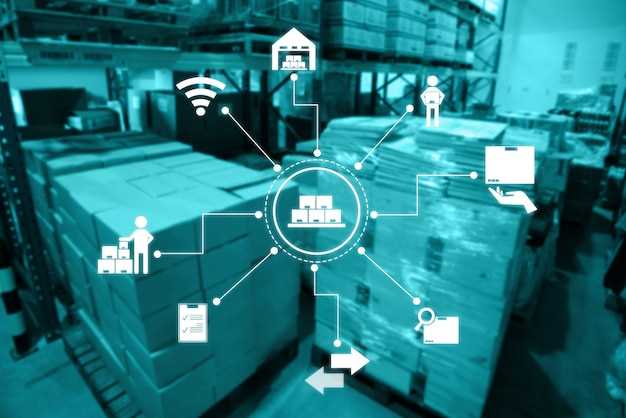Recommendation: Launch a 30-day pilot to enable real-time track of shipments across critical location ja statuses. Connect the last mile data to your supply network and set automated alerts for deviations in fulfillment.
Use a unified solution that ties data from carriers, warehouses, and manufacturing with processing pipelines. This capability lets teams see delays in real-time and choose corrective actions across their resilience plan.
Real-time visibility helps reduce kallis disruptions and waste by enabling proactive rerouting before a bottleneck becomes a stockout. A 30% reduction in idle processing time and a 20% improvement in fulfillment rates are realistic within two quarters when data is cleaned and normalized across the network.
Choose a design that supports standard data schemas, which enables seamless integration with suppliers and logistics providers. Prioritize a solution with a clear resolution for exceptions and a robust meeting of business needs across planning, procurement, and operations.
With accurate real-time visibility, your team will feel more confident in decisions, tracking events across location and time, and you can balance inventory to be more sustainable and reduce costs. Build a capability osoitteeseen predict disruptions, map root causes, and align meeting goals with fulfillment cycles to minimize waste and boost customer satisfaction.
Navigating the Unpredictable: The Real-Time Supply Chain Visibility; Observations From the Field
Adopt a real-time visibility dashboard across suppliers and fulfillment nodes to cut delays and avoid costly interruptions. In a concrete instance, teams recover faster by acting on fresh signals, preserving service levels.
Field observations show fragmented data from ERP, TMS, and supplier portals creates blind spots that amplify delays. When teams fuse data into a single feed, they gain visibility earlier and can respond before a ripple becomes disruptive. This enhanced operational stance strengthens the ability to track parts, orders, and shipments in near real-time, and it reduces the number of impacted shipments.
Define core metrics such as on-time delivery, delays by leg, unit-level cycle time, and inventory accuracy. Even a single delay can cost a million in lost revenue; set alert thresholds so teams act when a signal crosses a limit rather than after impact. Those metrics guide weekly reviews and enable proactive actions.
Regulations demand traceability and data integrity. A system that records event details, ownership, time, and location reduces risk when disruptions hit and supports faster remediation.
Those who are positioned with data at the center of the network gain greater visibility and protect reputation, even as disruptions become more frequent. When teams share a common view, those delayed shipments become manageable, and success rises for the entire network.
| Observation | Vaikutus | Toiminta |
| Fragmented data from ERP, TMS, and portals | High delays and missed commitments | Integrate streams into a unified visibility layer and trigger alerts |
| Infrequent weekly reviews | Blind spots grow, affecting customer timelines | Establish a weekly scorecard and assign owners |
| Regulatory pressure on traceability | Compliance risk if data is incomplete | Automate logging, timestamps, and provenance |
Navigating the Unpredictable: The Critical Role of Real-Time Visibility in Supply Chains; Observations From the Field

Implement a real-time visibility platform that aggregates data from suppliers, carriers, and internal sites to deliver actionable intelligence within minutes of disruption signals.
Field observations show that global disruption now hinges on geopolitical shifts, port congestion, and shifts in demand. Real-time visibility strengthens the role of data in decision-making, protects margins, and safeguards reputational value by shortening the time from signal to action.
- Key indicators to monitor: disruption indicators, route utilization, lead times, on-time delivery, inventory levels, and shipment status. Track dark data gaps and fill them with structured feeds from vendors, carriers, and IoT sensors to produce outcomes that matter for planning and execution.
- Where to intervene: identify changes in geographies or modes that affect before shipments depart. Focus on routes with the highest sensitivity to geopolitical or weather events, then align supply plans to those routes with alternative options ready.
- Data quality and intelligence: establish established data governance, cleanse data streams, and tag events with context. Use intelligence to distinguish true disruption from noisy signals, delivering clear recommendations rather than raw alerts.
- Impact on margins and competitiveness: faster detection and response reduce carrying costs and protect margins, while maintaining competitiveness through reliable delivery promises and transparent customer communication.
- Learning and continuous improvement: capture learnings after each disruption to refine alerting criteria, routing decisions, and supplier collaboration. Such learning sharpens resilience and reduces repeat impacts.
Concrete actions you can take now:
- Establish a data fabric that integrates supplier portals, carrier feeds, ERP, and logistics platforms to unify visibility across the network.
- Define actionable thresholds for alerts, and align escalation paths with procurement, production, and customer service teams.
- Map critical routes and simulate changes in scenarios to identify robust contingencies before disruptions hit shipments.
- Support proactive decision-making with dashboards that highlight impact, recommended interventions, and expected outcomes.
- Measure outcomes post-incident to validate improvements in delivery reliability, lead times, and customer satisfaction while tracking reputational risk reductions.
Field-tested recommendations to maximize utilization of visibility data:
- Align planning and execution: synchronize manufacturing, logistics, and warehousing plans around real-time signals to reduce delays and unnecessary inventory.
- Offer transparency to customers: share reliable ETA and route information to preserve trust and curb reputational risk during disruption periods.
- Invest in capability features: prioritize track-and-trace, anomaly detection, scenario planning, and integration with order management to deliver faster value than manual processes.
- Develop contingency routes: maintain at least two alternative routes or carriers for critical corridors to improve resilience against geopolitical or weather-related changes.
- Monitor utilization and leverage insights: use real-time data to optimize safety stock, reorder points, and transportation mode mix, balancing service levels with cost control.
In practice, teams that consistently translate visibility into action report shorter cycle times, clearer accountability, and stronger alignment across functions. By translating signals into concrete steps–before, during, and after disruptions–you elevate the entire supply chain’s performance and sustain long-term competitiveness.
Identify the most valuable real-time data streams for live visibility
Begin with real-time streams from vehicle telematics, GPS, and onboard sensors, plus dock and carrier statuses, to create a live view of departures, arrivals, and utilization. This concrete setup lets you prevent delays and gives your teams immediate alerts when routes overrun plans. Use a robust data model focused on accuracy and fast access to core metrics.
Align these streams with europe standards and share transparent ETA data with customers. If youre organization aligns data flows, decisions accelerate and blind spots shrink across the supply chain.
Prioritize streams that predict shifts in demand and capacity: real-time order status, vehicle health, weather, traffic, and load utilization. These inputs give competitive insight and help departments coordinate to improve outcomes and reduce consequences of delays.
Bring dark data into view by ingesting temperature, humidity, axle load, brake events, and driver behavior from sensors. This illumination reduces complex decisions into clear actions and helps prevent spoilage and risk.
Companies see savings and potentially higher accuracy of ETAs when streams are integrated across the network. Customers in europe receive transparent status, and departments align to reduce disruption, boosting competitive position and limiting consequences.
Map data flows from suppliers to warehouses to transport lanes to reduce latency
Adopt a centralized data fabric that maps data flows from suppliers to warehouses to transport lanes, and publish live events within seconds to planning tools here. This reduces latency, increases visibility, and cuts costly firefighting; the data layer becomes increasingly strategic as disruptions intensify, significantly improving planning accuracy. This gives planners a unified view and faster decision cycles.
To execute, build a single data map that shows data owners, data types, frequency, and latency targets. Integrate ERP, WMS, TMS, supplier portals, and carrier feeds using standardized adapters and streaming tools. This breaks silos and integrates data from providers and manufacturers into one view, supported by machine learning and analytics tools that validate freshness and consistency.
Define the data flow timing for each touchpoint: supplier order events, inbound receipts, warehouse occupancy, and outbound shipments. The infor layer captures metadata and lineage, enabling rapid alerts when data falls outside targets. Port and shipping status feeds, combined with social signals such as congestion reports, strengthen the accuracy of delay forecasts and inform proactive responses.
Set up alerts with role-based dashboards and automated playbooks. When delays are detected, the system automatically reallocates slots, reroutes transport lanes, or accelerates supplier shipments, significantly reducing ripple effects and improving overall performance. This supports a competitive advantage by shortening cycle times and lowering costly expedite costs.
Metrics to monitor include data freshness (minutes), percentage of events synchronized within target, reduction in days of inventory tied to delays, and improvement in on-time delivery to customers. Track the role of each provider and monitor port-level congestion to quantify impact. With this approach, manufacturers gain visibility across the network, while logistics teams execute faster and with less risk.
Define alerting rules that cut noise and speed field responses
Implement a three-tier alerting model with suppression rules and a centralized dashboard that keeps teams aligned. This approach helps field teams cut through chatter and respond faster, just enough to trigger action without overwhelming staff, especially across Europe where signals travel differently. Use practical playbooks that map alerts to the role of each department in shipping, warehousing, and assembly.
- Map signals by domain
- shipping: on-time delivery, ETA accuracy, carrier delays
- warehousing: stock levels vs safety stock, throughput, picking cycle time, damaged goods
- assembly: line uptime, stoppages, takt adherence
- physical: asset condition, temperature/humidity for controlled goods
- consumption: forecast vs actual usage, order pace
- Set tiers and dynamic baselines
- Warning: a signal breaches threshold for a defined window (for example 15 minutes)
- Critical: consecutive breaches or a longer window (30 minutes) with impact on flow
- Emergency: multiple domains show issues or a surge in disruption patterns
- Use rolling baselines that account for natural variation and seasonality, not static targets
- Implement noise suppression
- Coalesce alerts by site and SKU, not as isolated events
- Apply cooldown windows to prevent duplicates within a short span (e.g., 15–30 minutes)
- Avoid duplicating a single issue across adjacent domains without added context
- Leverage anomaly detection and baselining
- Base alerts on a 90-day trend and adjust for natural consumption shifts
- Flag deviations that exceed modeled variability rather than every minor fluctuation
- Keep a simple audit trail to explain why a signal triggered and what changed
- Design escalation and response playbooks
- Clearly assign the role of each department for each alert level
- Critical alerts auto-notify the warehouse manager and shipping supervisor; if unresolved in 20 minutes, escalate to regional leadership
- Link alerts to concrete actions (reallocate capacity, adjust shipping windows, initiate replenishment)
- Incorporate regional and disruption scenarios
- Include Europe-specific patterns, such as peak seasons and cross-border transit constraints
- Account for disruption risks seen in pandemic-like events or supplier shocks to adjust thresholds
- Measure impact and refine
- Track faster decisions, reduced problem recurrences, and fewer false positives
- Monitor metrics like MTTA and MTTR to ensure teams identify and resolve issues quickly
- Review quarterly and tune thresholds based on consumption, shipping, and warehousing data
By centralizing signals, linking alerts to concrete actions, and keeping thresholds pragmatic, teams maintain visibility without overload. This approach helps anticipate problems, support strategic planning, and preserve the ability to keep assembly lines moving and warehouses balanced, even during shifting demand or unexpected events.
Integrate field observations into a practical dashboard for frontline decision-making
Implement a field-observations feed on the dashboard to enable frontline decisions. This offering blends real-time information from drivers, depot staff, and on-site sensors, providing a surface for quick action. Configure filters by region, product family, and time horizon to reduce lookup time and increase decision speed, especially for teams looking to anticipate issues.
Keep data reliable by linking field notes to a canonical surface that includes ETA status, inventory levels, and transport status. When unexpected disruptions appear, the surface flags them with color cues and ties the signal to a recommended next step. This approach supports longer planning windows without sacrificing situational awareness.
Cut through static noise by focusing on end-to-end signals: ETA changes, loading capacity, and route viability. Use analytics to surface trends rather than raw notes, allowing frontline to see whether a change is isolated or part of a larger pattern.
Offer an alternative workflow for exceptions: field notes can be annotated with photos, geotags, and a timestamp, stored with the official information and accepted into slas for response times. When a note isnt aligned with the system forecast, the dashboard prompts quick reconciliation and an auditable match between observation and plan.
Design for natural usage: ensure the dashboard remains usable on mobile devices, supports offline data capture for remote sites, and provides a reliable service with clear guidance for action. This reduces cognitive load and accelerates decisions during a disruption.
Implementation tips: start with a minimal viable surface focusing on two or three critical products, and expand to add field signals from additional sites as you confirm data quality. Tie each signal to a concrete action: reroute a shipment, adjust a loading plan, or reallocate inventory to a high-demand location. Monitor benefits such as reduced longer delays, improved SLAs, and cleaner emissions data over time.
Instance scenarios show how changes surface quickly: when a field notice reports a road closure, the dashboard updates end-to-end schedules, reroutes pallets automatically, and informs customers with a revised ETA while teams act to minimize emissions and service disruption.
Measure impact with concrete, field-centered KPIs and rapid iteration cycles

Start with a compact, field-centered KPI set and clear ownership. Define five actionable KPIs: on-time delivery rate, forecast accuracy, inventory days of supply, warehouse throughput, and exception rate per process. Track these weekly at every location, including muddaiah, to surface what remains hidden in raw numbers and meet expected outcomes.
Institute rapid iteration cycles: run two-week sprints where a single, well-defined change is tested, measured, and documented. After each sprint, reassess with the same KPI lens and quickly decide the next adjustment.
Choose a platform that integrates data across WMS, TMS, ERP, and supplier portals. Central dashboards should pull real-time status by location and show trend lines for each KPI. Actionable alerts help ops teams act within minutes and justify decisions with clear progress data, even when external conditions shift over years of operation.
Factor risks into the model: geopolitical tensions, port congestion, and supplier concentration affect lead times and costs. Include a risk-adjusted KPI like lead-time variability and processing times to reflect actual delivery reliability.
Benefits accumulate as you close gaps: fewer stockouts, higher service levels, faster cash-to-cash cycles, and sustained growth. The metrics reveal progress and cost-to-serve tradeoffs, helping leadership set realistic expectations.
List of practical steps to start now: 1) appoint field KPI owners by location; 2) define data sources and data quality checks; 3) launch a two-week sprint cycle; 4) build a single, shareable dashboard; 5) review weekly results and iterate.

 Navigating the Unpredictable – The Essential Role of Real-Time Supply Chain Visibility">
Navigating the Unpredictable – The Essential Role of Real-Time Supply Chain Visibility">
